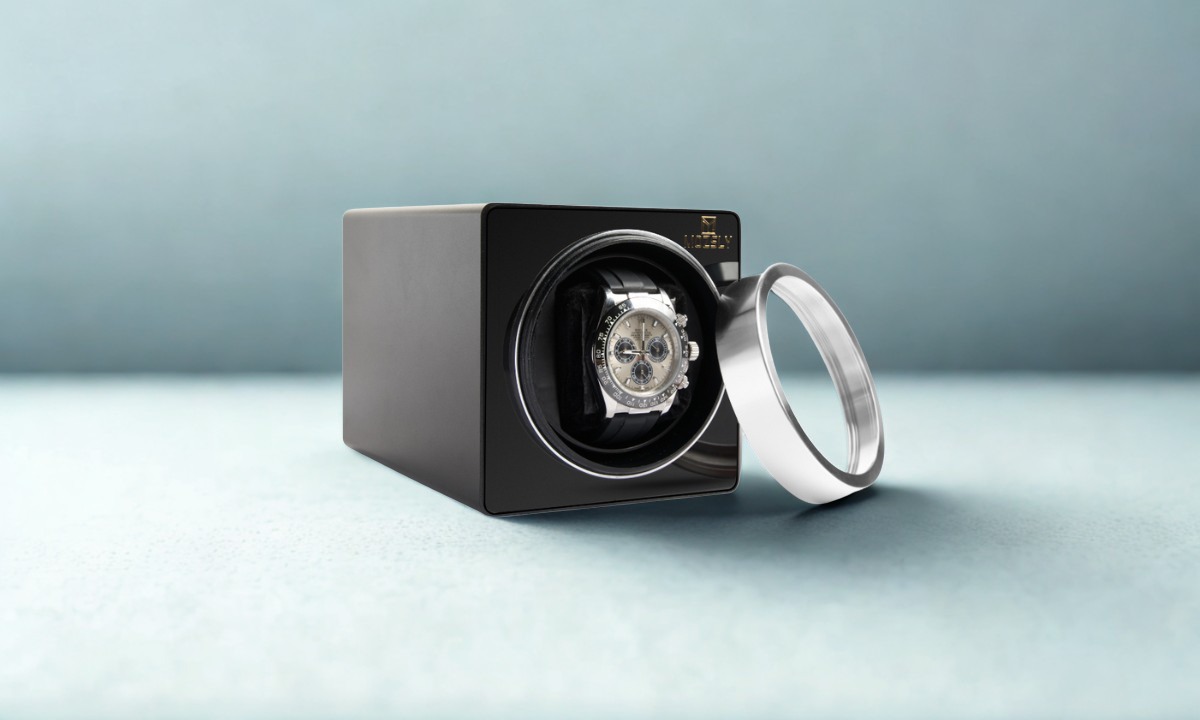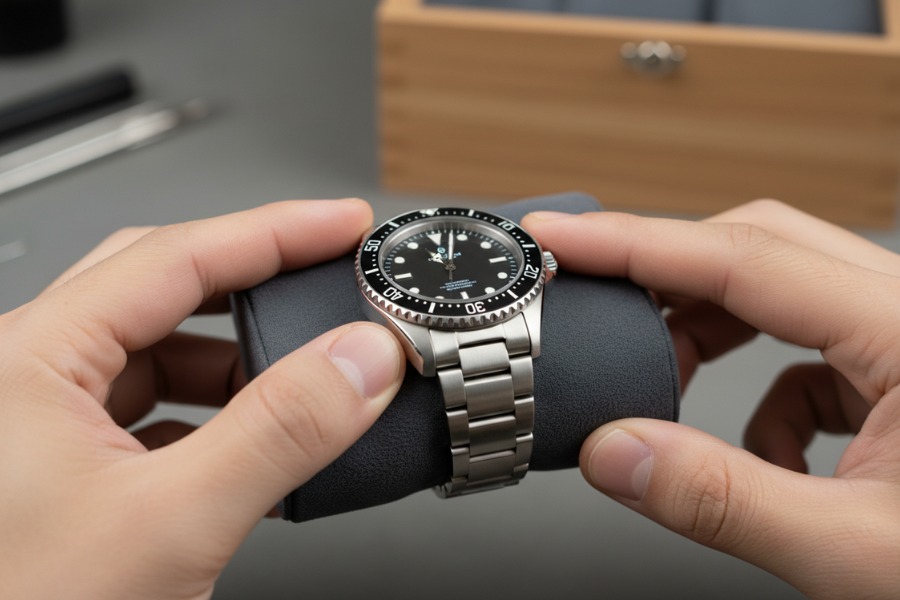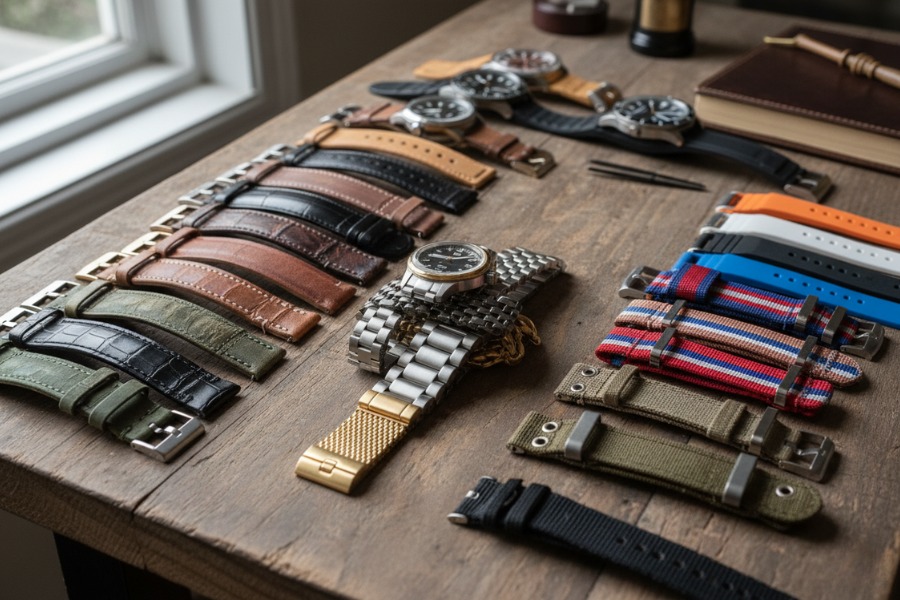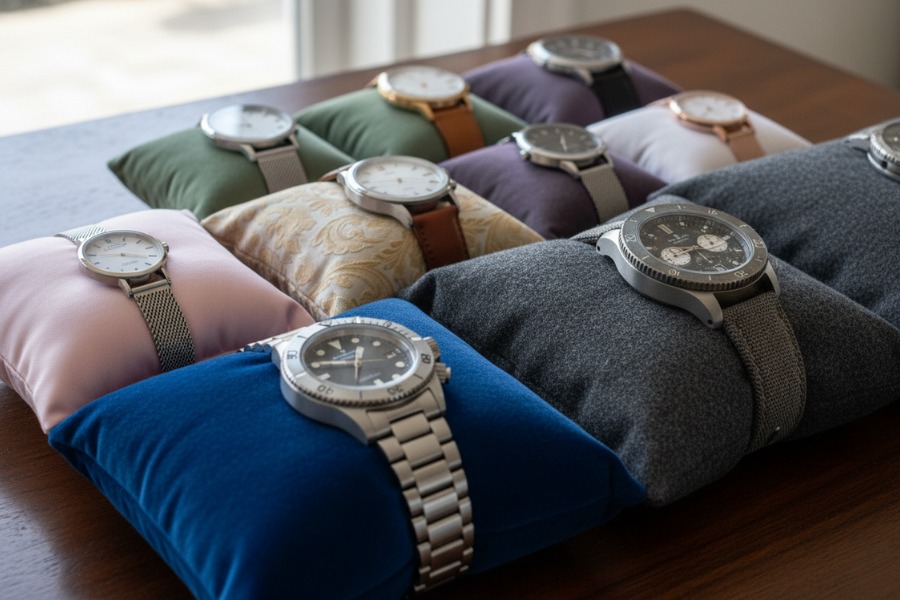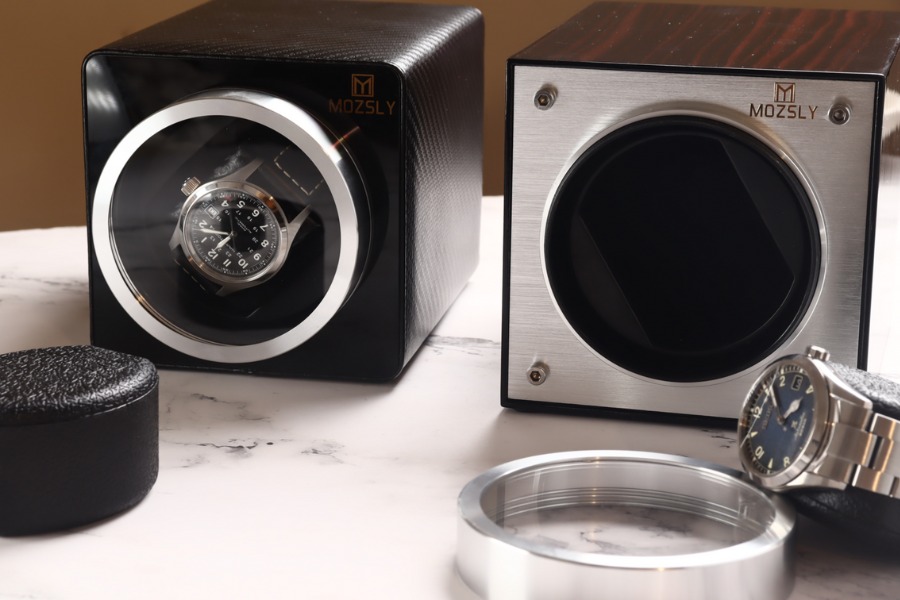Share This Post
I’ve collected mechanical watches for almost a decade, and I still get that little jolt of fear when I set a piece on a watch winder. You would think the feeling fades after servicing Seikos, Omegas—even the odd vintage Rolex—but memories stick.
My worst memory? Watching Marco’s $5,000 diver bounce off the hardwood because the strap was just loose enough to slip. My own worst move came earlier, when I cranked a 1960s leather strap so tight the holes stretched like tired shoelaces. Two mistakes—opposite problems, same lesson: tension matters.
If you’ve ever wondered, “Is my watch too tight on the winder—or not tight enough?” you’re in the right place. I’ll share what I’ve learned from watchmakers, forum veterans, and a handful of painful repair bills. Give me five calm minutes, and you’ll leave knowing the simple checks that protect any automatic watch you own.
The Goldilocks Method—Finding Perfect Watch Winder Tension
You remember Goldilocks: too hot, too cold, just right. Watches feel the same way.
Here’s my go-to “Two-Finger Test.” It works for roughly 9 out of 10 watches:
- Slip your watch onto the winder’s cushion.
- Close the clasp or buckle like it’s on your wrist.
- Slide two fingers between the strap and cushion.
- Light squeeze? Perfect.
- Fingers jammed? Too tight.
- Fingers float? Too loose.
- Spin the cushion once in your hand. The watch should move as a single, steady unit—no wobble.
- Pop the cushion back into the automatic watch winder and hit “start.”
When the tension is right, the watch feels “hugged, not crushed.” If leather bends sharply or your fingers struggle, loosen a notch. If you can jiggle the head side-to-side, tighten a notch.
A quick check now beats a cracked crystal later.
Visual Signs Your Watch Is Properly Mounted
Not a fan of finger tests? Use your eyes:
- Watch sits level; dial faces straight ahead.
- No gaps between the strap (or bracelet) and cushion.
- Leather shows zero deep creases or compression marks.
- The strap or bracelet follows the cushion’s natural curve.
I like to sip coffee and watch the first rotation. If the case glides smoothly without sliding, I relax.
Red Flags That Signal Mounting Problems
Spot any of these? Pause the winder and remount.
- Deep strap creasing within an hour.
- Watch “walks” around the cushion each turn.
- You wrestle to pull the watch off the cushion.
- Gaps open near the lugs while spinning.
- The case tilts or sits off-center.
- Fresh scratches on the case back or bracelet.
One red flag is plenty—fix it before something pricey happens.
Material-Specific Watch Winder Mounting Techniques
Different straps, different rules. Let’s treat each material with respect.
Leather Straps—Protecting Natural Materials
Leather is skin; skin stretches, dries, and cracks.
- Use about 80 % of your normal wrist tension.
- Leave a hair of slack for humidity changes.
- Peek after the first hour for compression marks.
- Alligator or crocodile? Even gentler—one extra hole looser.
- Calfskin is tougher but still likes the “hug, don’t choke” rule.
Benefit: Proper slack keeps pores from splitting, so your leather lasts years, not months.
Metal Bracelets—Firm Mounting Without Scratches
Steel and titanium spread weight across links, so they can handle a bit more squeeze.
- Center the clasp on the cushion.
- Links at the lugs should lie flat, never twisted.
- Over-tightening bends link pins—avoid that.
- Use a micro-adjust if you hear rattles.
- Slip a thin microfiber sleeve over the cushion to dodge hairline scratches.
A secure metal mount means smooth winding and zero clinking sounds at 3 a.m.
Rubber & Silicone—Balancing Flexibility with Security
Rubber stretches like a gym band; give it room, but not a playground.
- Start with the standard two-finger test.
- Recheck in 24 hours—if the strap has relaxed, tighten one hole.
- Heavy dive or sport watches often need a touch more snugness, just not enough to make the strap pucker.
Getting this balance right stops stretch lines and keeps the automatic movement fully wound.
Protecting Your Investment—Security & Damage Prevention
I know the feeling—you set your watch in a watch winder for automatic watches, turn off the lights, and wonder, “Will it be safe?” Proper tension erases that worry:
- Solid mounting shields the delicate automatic watch movement from sudden jolts.
- Correct pressure prevents tiny fractures in leather or stress on metal links.
- A steady hold lets the winder’s motor hit the exact turns-per-day recommended by the maker.
When you nail the mount, you sleep easy.
What Happens When Mounting Goes Wrong
- Fall damage: A friend’s $7,000 pilot watch hit tile—one loose click. Crystal replacement? $400.
- Strap blow-outs: My vintage strap tore because I cranked it tight. Finding a period-correct replacement felt like hunting unicorns.
- Poor winding: A loose watch sits crooked, so the rotor can’t spin. You wake up to a dead watch and have to reset the time—annoying and hard on gears.
Lesson: tiny mounting mistakes equal big repair invoices.
Securing Different Watch Weights & Sizes
Quick weight guide:
- Under 100 g (vintage or dress) → gentle, around 70 % wrist tension.
- 100–150 g → normal two-finger rule.
- Over 150 g (large divers, pilots) → a bit firmer; one micro-adjust tighter.
Oversized 45 mm+ cases need broad support. Grab the larger cushion from most watch winder cases or stuff a foam insert behind the standard one.
Special Cases & Troubleshooting
Life happens. Here’s how to keep calm and keep winding.
Common Watch Winder Problems & Quick Fixes
Problem → Quick fix:
- Watch slipping → Tighten one notch; confirm cushion isn’t undersized.
- Strap marking → Loosen a notch, add a thin cloth layer, or swap to a bigger cushion.
- Inadequate winding → Reseat watch, dial faces forward, verify direction & TPD settings.
- Noise during rotation → Test winder empty; if silent, remount with better balance.
- Tough removal → Grip cushion edges, press release buttons slowly—no sudden jerks.
Keep this list handy; I taped it inside my cabinet door.
Mozsly Watch Winder—Setup & Troubleshooting
I’ve been using a Mozsly watch winder lately, and here’s what works for me:
Setup steps:
- Choose the cushion that fills 80–90 % of your case back. Mozsly ships two sizes.
- Adjust your strap to hold that cushion snugly.
- Run the two-finger test.
- Slide the cushion into its slot until it clicks.
- Pick 650 TPD, bi-directional—a safe starting point for most automatic pieces.
Quick fixes:
- Watch slipping → Swap to the thicker cushion or use a tighter clasp setting.
- Inadequate winding → Bump to 850 TPD or check that the rotor isn’t blocked.
- Loud hum → Cushion may be off-center; pull it out, realign, and click back in.
Simple tweaks, happy watch.
Your Quick Reference Mounting Checklist
Bookmark this—future you will say thanks.
Pre-Mounting Setup
- Pick the right cushion for your case size.
- Lay the watch dial-up on a soft cloth.
- Start with the strap slightly loose; it’s easier to tighten later.
- Check the winder slot for dust or stray lint.
Mounting Verification Steps
- Do the two-finger test.
- Inspect for gaps or strap creases.
- Rotate the cushion once by hand.
- Run the automatic watch winder for two powered cycles—watch for sliding.
- After 24 hours, peek again; adjust if needed.
Then sit back and enjoy that quiet whirl.
Conclusion
If you remember only one thing, make it the two-finger test. That tiny habit keeps leather soft, bracelets scratch-free, and the heart of every automatic watch beating on time. I’ve paid the price of ignoring it; you don’t have to.
So here’s my challenge: the next time you set a watch on a winder—maybe tonight—do the test, glance at the visual cues, and sleep easy. If this guide saves your watch, share it with a friend or post it in your favorite watch forum. Let’s keep more timepieces safe, one snug “hug” at a time.
Related Post's
Featured Video
Provide an email subscription feature for users to sign up for updates.
Follow the world of watches and cigars for exclusive content!
By subscribing to our newsletter, you will be the first to receive notifications of our latest articles, popular posts and special events.

